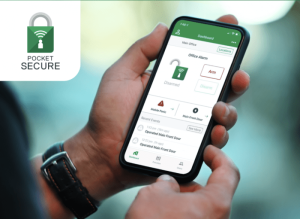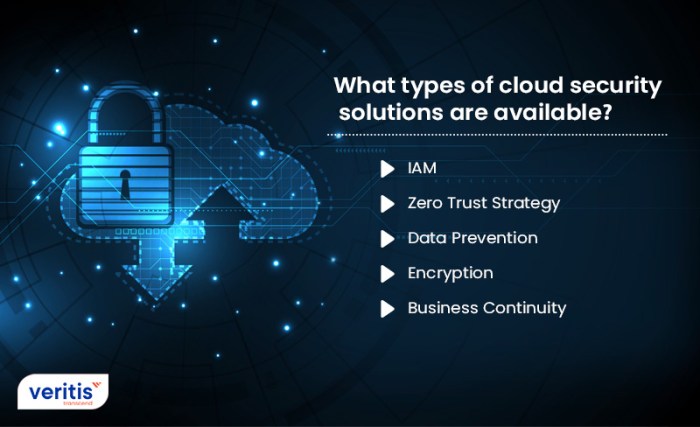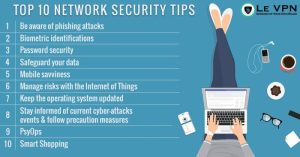
Step into the realm of data security best practices where safeguarding your digital assets is paramount. From understanding common threats to exploring encryption, this journey promises to be both enlightening and practical.
In today’s digital landscape, data security is not just a buzzword—it’s a critical aspect that every organization needs to prioritize. With cyber threats looming large, it’s time to delve into the world of best practices to ensure your data stays safe and secure.
Data Security Best Practices
In today’s digital landscape, data security is of utmost importance to safeguard sensitive information and maintain the trust of customers and clients. Implementing robust data security measures is crucial to protect against cyber threats and potential breaches that can have severe consequences for businesses.
Common Threats to Data Security
- Phishing attacks: Cybercriminals use deceptive emails or messages to trick individuals into revealing confidential information.
- Malware: Malicious software can infect systems and steal data, disrupt operations, or cause financial harm.
- Insider threats: Employees or contractors with access to sensitive data may intentionally or unintentionally compromise security.
- Ransomware: Hackers encrypt data and demand payment for decryption, threatening to leak information if demands are not met.
Consequences of a Data Breach for a Business
- Financial loss: Data breaches can result in hefty fines, lawsuits, and damage to a company’s reputation, leading to financial repercussions.
- Loss of customer trust: A breach erodes trust in a business’s ability to protect sensitive information, potentially driving customers away.
- Operational disruptions: Remediation efforts following a breach can disrupt normal business operations, causing delays and inefficiencies.
- Legal consequences: Non-compliance with data protection regulations can lead to legal penalties and regulatory scrutiny.
Role of Encryption in Securing Sensitive Data
Encryption plays a vital role in data security by converting information into a coded format that can only be decrypted with the correct key. This ensures that even if data is intercepted, it remains unreadable to unauthorized parties. By implementing encryption technologies, organizations can enhance the protection of sensitive data and mitigate the risk of unauthorized access or data breaches.
Implementing Data Security Measures
When it comes to securing data, implementing the right measures is crucial to protect sensitive information from unauthorized access or breaches. Let’s explore some key data security measures that organizations can adopt:
Access Controls and Authentication
Access controls and authentication play a vital role in ensuring that only authorized users can access sensitive data. By implementing strict access controls, organizations can limit who can view, edit, or delete data, reducing the risk of data breaches.
- Implement role-based access control (RBAC) to assign specific permissions based on users’ roles and responsibilities.
- Use multi-factor authentication (MFA) to add an extra layer of security by requiring users to provide multiple forms of verification.
- Regularly review and update access controls to reflect changes in personnel or organizational structure.
Regular Data Backups
Regularly backing up data is essential for data security, as it ensures that organizations can recover lost or corrupted data in the event of a cyberattack or system failure. By maintaining up-to-date backups, organizations can minimize the impact of data loss and ensure business continuity.
- Automate the backup process to ensure that backup copies are created regularly without manual intervention.
- Store backups in secure offsite locations to protect them from physical damage or theft.
- Test data restoration processes periodically to verify the integrity and reliability of backups.
Data Masking
Data masking involves replacing sensitive data with fictitious or altered values to protect the original information from unauthorized access. This technique helps organizations maintain data privacy while using realistic data for development, testing, or analytics purposes.
- Use data masking techniques such as encryption, tokenization, or anonymization to obfuscate sensitive data.
- Implement dynamic data masking to control access to sensitive data in real-time based on users’ permissions.
- Regularly audit and monitor data masking processes to ensure that sensitive information remains protected.
Cloud-Based Security Solutions vs. On-Premises Security Measures
Cloud-based security solutions and on-premises security measures each have their own advantages and considerations when it comes to data security. Organizations need to evaluate their specific needs and requirements to determine the most suitable approach.
- Cloud-based security solutions offer scalability, flexibility, and cost-effectiveness, making them ideal for organizations with dynamic workloads or limited IT resources.
- On-premises security measures provide greater control and customization over data security practices, making them suitable for organizations with strict regulatory requirements or data sensitivity concerns.
- Hybrid security solutions that combine cloud-based and on-premises security measures can offer a balanced approach that leverages the benefits of both options.
Employee Training and Awareness

In order to ensure data security within an organization, it is crucial to have a well-designed training program for employees to raise awareness about potential threats and best practices to mitigate risks.
Designing a Training Program
- Develop modules covering various aspects of data security, including the importance of protecting sensitive information, recognizing phishing attempts, and maintaining password hygiene.
- Incorporate real-life examples and case studies to illustrate the consequences of data breaches and the impact on both individuals and the organization.
- Utilize interactive elements such as quizzes, simulations, and role-playing exercises to engage employees and reinforce learning.
Raising Awareness about Phishing Attacks and Social Engineering
- Organize workshops to educate employees on how phishing attacks work and common tactics used by cybercriminals to trick individuals into revealing sensitive information.
- Highlight the importance of verifying the authenticity of emails, messages, and requests for information before responding or clicking on any links.
- Encourage employees to report any suspicious communications or activities to the IT security team for further investigation.
Creating Strong Passwords and Password Hygiene
- Provide guidelines on creating strong passwords that are complex, unique, and regularly updated to reduce the risk of unauthorized access to accounts.
- Emphasize the importance of not sharing passwords with others, using password managers to securely store credentials, and enabling multi-factor authentication for added security.
- Recommend periodic password changes and conducting regular security audits to identify and address any potential vulnerabilities.
Reporting Security Incidents within the Organization
- Demonstrate the process of reporting security incidents, including whom to contact, what information to provide, and the steps to take to contain and mitigate the impact of the incident.
- Encourage a culture of transparency and accountability within the organization regarding security incidents, emphasizing the importance of prompt reporting to prevent further damage.
- Offer training on incident response protocols and procedures to ensure that employees are prepared to handle security incidents effectively and efficiently.
Regulatory Compliance and Data Security
In today’s digital landscape, regulatory compliance plays a crucial role in ensuring data security within organizations. The General Data Protection Regulation (GDPR) and other data protection regulations have significant implications on how businesses handle and protect sensitive information.
Implications of GDPR and Data Protection Regulations
- GDPR mandates strict guidelines on data collection, processing, storage, and sharing to protect the privacy of individuals.
- Non-compliance with GDPR can result in hefty fines, damaged reputation, and loss of customer trust.
- Other regulations like HIPAA (Health Insurance Portability and Accountability Act) and PCI DSS (Payment Card Industry Data Security Standard) have industry-specific requirements for data security.
Steps to Ensure Compliance with Data Security Standards
- Conduct regular audits and risk assessments to identify vulnerabilities and gaps in data security measures.
- Implement encryption technologies to safeguard sensitive data in transit and at rest.
- Train employees on data protection best practices and create a culture of compliance within the organization.
- Establish clear policies and procedures for data handling, breach response, and incident reporting.
Role of a Data Protection Officer (DPO)
- The DPO is responsible for overseeing data protection strategies, ensuring compliance with regulations, and acting as a point of contact for data protection authorities.
- They play a crucial role in advising the organization on data security measures, conducting impact assessments, and monitoring compliance with regulatory requirements.
Data Security Frameworks for Regulatory Compliance
- ISO/IEC 27001: An internationally recognized standard for information security management systems.
- NIST Cybersecurity Framework: Provides a risk-based approach to managing cybersecurity risks and improving resilience.
- COBIT (Control Objectives for Information and Related Technologies): Offers a comprehensive framework for governance and management of enterprise IT.
Last Word

As we wrap up our exploration of data security best practices, remember that protecting your data is an ongoing commitment. By implementing the right measures, training your employees, and staying compliant with regulations, you can fortify your defenses and keep your valuable information out of harm’s way. Stay vigilant, stay secure.
FAQs
How often should data backups be performed?
Data backups should ideally be performed regularly, depending on the volume of data and the criticality of the information. It’s recommended to have automated backup systems in place for seamless protection.
What are some common mistakes to avoid when creating passwords?
Avoid using easily guessable passwords like “123456” or “password.” Instead, opt for complex combinations of letters, numbers, and special characters to enhance security.
Why is employee training crucial for data security?
Employee training is crucial as human error is one of the leading causes of data breaches. By educating employees on best practices and potential threats, organizations can significantly reduce security risks.





